Chokeberry raspberries are still rarely found in household plots. However, it is incredibly healthy, productive, and tasty. Black raspberries are rich in vitamins that protect against cellular aging, anemia, and cancer. The description of black raspberries suggests that many varieties are not capricious in cultivation, are drought-resistant, frost-resistant and tolerate transportation well.Ripe black berries do not fall off for a long time.
|
This is what a black raspberry bush looks like in the garden |
| Content:
|
The differences between black raspberries and ordinary ones are also its advantages.
- Black-fruited varieties have a more delicate, sweet without sourness, aromatic taste.
- The ripening dates are the earliest, the yield is high, about 5 kg of fruit can be collected from one bush.
- The plant does not form root shoots.
- Aronia raspberries have excellent resistance to common crop diseases and are practically not damaged by pests.
- Unlike blackberries, with which aronia raspberries are often confused, its berries are very easily separated from the fruit.
|
The fruits gradually change color from green to black-violet. The berries do not fall off for a long time, even after full ripening. |
Black raspberry is a perennial shrub that grows vertical shoots in the first year of life. The shoots of many varieties are covered with thorns. Flowers and fruits, which are collected in clusters as in the photo, appear only on the shoots of the second year of life. A distinctive feature of flowers is the presence of a large number of stamens. The flowering period occurs in late spring or early summer and lasts about 2–3 weeks.
Black raspberry varieties
There are not many varieties of black raspberries yet, but due to the high frost resistance of most of them, they can be grown in many regions of Russia, including the Moscow region. Descriptions of the best varieties of black raspberries with reviews and photos will help you choose a suitable seedling.
Cumberland
|
One of the oldest varieties of black raspberries. A feature of the bushes of this variety are strong, arched stems. |
Attracts gardeners with its high frost resistance. The fruits tolerate transportation well.
- The ripening period is average, mid-July. Fruiting is extended.
- The yield is average, 2.5 kg per bush.
- The average weight of the berry is 2-2.5 g. The taste is sweet with a blackberry flavor. The pulp is tender, with a delicate aroma. There are 10-15 clusters on each stem.
- The height of the bush is up to 2 m, the branches have thorns located quite densely.
- Prefers sunny places, does not like strong waterlogging of the soil, drafts. The distance between bushes during planting is maintained at 60 cm.
- Frost resistance -40°C (zone 3, 4). In the Moscow region and the central zone it can winter without shelter.
“The Cumberland variety has very tasty berries. Frozen berries are dense and do not become soggy after thawing. There are a lot of berries. Ripens in late July-early August. We do not cover it for the winter. The shoots are very long - we tie them up. We have a wire strung for them. The only downside is that the branches are very thorny. If you don't tie it down and don't trim it, there will be impenetrable thickets. I cut it out in the spring and tie up the young shoots in the summer.”
Earley Cumberland
|
A variety that resembles blackberries not only in appearance, but also in taste. |
Up to 15 medium-sized berries ripen on a fruit cluster. The variety is not susceptible to diseases and pests.
- Ripening period is early, early July.
- Productivity up to 3.5 kg of berries per bush.
- The fruits are medium-sized, weighing 1.6–2.2 g. The fruits of the Airlie Cumberland variety are round in shape, colored black and purple, have a very sweet taste and dense pulp.
- The height of the bush is up to 2 m, there are many thorns on the shoots.
- It is better to grow in sunny places, maintaining a distance of 50 cm between bushes.
- Frost resistance -30°C (zone 4). In the Moscow region it is necessary to bend the shoots to the ground.
Do not miss:
Ember
|
Black raspberry Ugolek |
The Ugolek variety is distinguished by its sour berries, resistance to cold, drought, and resistance to pests and diseases. The bush is moderately spreading.
- Ripening period is early, June-July.
- Productivity up to 6 kg per bush.
- The weight of the berries is 1.8–2.3 g. The berries are juicy, with a pleasant sour-sweet taste and blackberry aroma. Tasting score: 4.1 points out of 5.
- The height of the bushes is 2.2–3 m, the stems are covered with small thorns.
- The crop grows best on loam and sandy loam soils, in sunny places.
- Frost resistance (-28°C...-34°C) – climate zone 4. In the Moscow region and the central zone, it is enough to mulch the roots in the fall and throw snow on the plantings in the winter.
“...black raspberries Coal are small (at least without watering), but sweet, grow conveniently on a fruit branch in such a ball of 6-12 berries, such clusters look upward. The children appreciated it and said it was very tasty and would graze in it anyway. In the photo in the lower left corner, small with a coating. You can’t collect a lot of it, a couple of bushes on the site will be enough...”
Bristol
|
One of the best varieties of black raspberries with large and sweet fruits. |
It has a high yield. Bristol is not resistant to fungal diseases.
- Ripening time is average, July-August. Maturation is friendly.
- Productivity per plant is 5-7 kg.
- The fruits are round in shape and resemble blackberry, are distinguished by a sweet, rich taste with tart notes. Tasting score – 4.7 points out of 5 possible. Weight – 5 g.
- The height of the bush is 2.5-3 m, the shoots have thorns.
- Bristol prefers sunny locations. The bushes grow well in moderately acidic soils. The distance between bushes should be maintained at 80 cm.
- Frost resistance -28°С…-34°С (zone 4). In the Moscow region it winters without shelter; in Siberia and the Far East it requires protection from frost.
“The Bristol variety has a compact, upright bush.The berries are firm, elastic, large, of good quality, easy to pick, are not damaged and do not release juice when picked. Suitable for processed products, jelly, freezing.”
Black Jewel
|
Black Jewel is a high-yielding, drought-resistant, frost-resistant variety. |
One fruit cluster bears 12-15 berries. There are 20-25 inflorescences on each meter of shoot. Resistance to powdery mildew is low.
- Average ripening period, July-September. Fruiting is extended.
- Productivity 10 kg per plant.
- The weight of the berries is up to 4 g. The fruits are painted black and have a bluish coating. The shape is round. The taste is sweet with a blackberry aroma. The pulp of the berries is tender and elastic.
- The height of the bush is up to 2.5 m. The stems are erect, with thorns, of medium length.
- For planting, you need to choose a well-lit place, without drafts, the distance between the bushes should be maintained at 60 cm.
- Frost resistance -30°C...34°C – climate zone 4. In the Moscow region it winters without shelter, in Siberia and the Far East it requires protection from the cold.
Do not miss:
“Black Jewel definitely surpasses Glen Coe in taste. You can’t argue with the fragrant, sweet berry with a specific forest taste. The jam made from it is superb - there are no words. Glen Coe is a rather fresh berry, but when fully ripe it is also sweet, and because of its abundance and color it attracts all household members.”
Boysenberry
|
It is attractive to gardeners not only for its high yields, but also for its sweet and aromatic berries, as well as the absence of thorns. |
It is considered the best of the chokeberry varieties. The plant has strong immunity and is practically not susceptible to disease.
- Medium ripening period, July-August.
- Productivity 5-6 kg per plant.
- The length of the berries is 4 cm. The fruits are sweet and aromatic.
- The height of the bush is 3 m, the stems are creeping, without thorns.
- Plant in sunny areas, the distance between bushes is 1-1.5 m.
- Frost resistance -28°C...34°C – climate zone 4. In the Moscow region it winters without shelter, in Siberia and the Far East it requires protection from the cold.
“The yield of Boysenberry, compared to blackberries, is low, at the level of raspberries (the berries are large, up to 4 cm), while the bush grows very actively and takes up a lot of space. But the taste is amazing, for me the main criterion is that my children and husband really like it.”
New Logan
|
A high-yielding, early-ripening variety with very tasty berries. |
- Early ripening variety, first ten days of July.
- Productivity 6 kg per plant.
- The berries weighing 2 g have a glossy shine and taste like blackberries. It is distinguished by the rich black color of the fruit.
- The height of the stems with rough thorns is average - up to 2 m.
- Prefers sunny places, the distance between bushes is 70 cm.
- Frost resistance is average -24°C (zone 5). In the Moscow region, good protection for the winter is required.
Do not miss:
Litach
|
The fruits are medium in size, the yield is average, but the harvest can be obtained even under the most unfavorable conditions. |
- Ripening period is early, early July.
- Productivity 3 kg per bush.
- Berries - 2 g, black with a bluish coating, spherical in shape.
- The shoots are tough, curved, up to 2 m high, with strong thorns.
- Prefers sunny places, the distance between bushes is 50 cm.
- Frost resistance is low, grows in winter hardiness zones 4–8. Rarely found in the Moscow region. Needs protection from frost.
Gift of Siberia
|
The advantage of the Dar of Siberia variety is its frost resistance, resistance to pests and diseases. |
- Early ripening, early July.
- Productivity 2.5-4.3 kg per bush.
- The berries are small or medium-sized, weighing up to 1.6-2.0 g, dense, with a dessert taste. The taste qualities of the berries are rated at 4.6 points.
- The height of the bush is up to 2.8 m, there are few thorns, they are short, hard, curved downwards. Drooping shoots.
- Prefers sunny places with low groundwater levels. Experts recommend maintaining a distance of 80 cm between bushes.
- Frost resistance is high, the variety is adapted for cultivation in Siberia. In the Moscow region it winters without shelter.
Turn
|
It has good winter hardiness and resistance to diseases and pests. |
One of the best early ripening varieties. Turn has high yields. Thanks to the dense, elastic pulp, the berries tolerate transportation well.
- An early ripening variety with compressed fruiting.
- Productivity up to 6 kg per bush.
- The weight of the berries is 1.6-1.9 g. The fruits are hemispherical, black, without pubescence. The pulp is juicy, sweet taste with slight sourness, and has high gelling properties.
- The height of the stems with thorns is 2.4-2.6 m.
- The crop grows better in sunny areas with low groundwater levels. A distance of 80 cm is maintained between bushes.
- Frost resistance is high -34C° (zone 4), in the Moscow region and the middle zone it winters without shelter.
“The raspberries taste very sweet, but they don’t have the typical raspberry flavor. We didn't like the jam made from it. It seemed cloying. That's why I don't grow only this variety. This one is for food, and the regular red one is for jam.”
Glen Coe
|
The Glen Coe variety is distinguished by smooth, thornless stems, abundant yield and excellent taste. |
- Mid-season ripening, fruiting extends from mid-July to September.
- Productivity 6-6.5 kg per plant
- Fruit weight is 5-6 g. The berries are purple-violet, with a coating of wax, conical in shape.They have a sweet and sour taste with blackberry notes and an intense aroma.
- The height of the bush is 1.5-2 m, the shoots are without thorns.
- Prefers sunny places with alkaline soil, the distance between bushes is 30-40 cm.
- Frost resistance -20°C (zones 3-8). In the Moscow region, Siberia and the Far East, it requires protection from the cold.
“I had to see the plantings of this Glen Coe and taste it. Beautiful and unusual appearance, outwardly it looks like the berry is dirty, inside it has a dark ruby color, I liked the taste and even really liked it.”
Irina
|
The Irina variety is distinguished by large conical berries of a color that is rare for black raspberries - bluish-purple with a blue rim |
- Ripening time is average, July-August.
- Productivity up to 5-6 kg per bush.
- The berries are large (3-5 g), unusual purple-blue color, conical in shape. The taste is sweet and sour, dessert.
- The bush is semi-spreading, up to 2.5 m high, with arched, thick shoots with thorns.
- The culture is unpretentious to soil, the distance between bushes is 0.8-1.0 m.
- Frost resistance is high -34C° (zone 4), in the Moscow region and the middle zone it winters without shelter.
Luck
|
The variety has a high yield. Winter-hardy, resistant to diseases and pests. |
- Mid-early ripening, July-August.
- Productivity up to 5.5 kg per bush.
- The average weight of the berries is 1.8-2.2 g. The taste is sweet and sour, tasting score is 4.8 points.
- The bushes are slightly spreading, 1.7-2 m high, characterized by weak thorniness - the thorns are short, curved and single.
- Prefers sunny places with low groundwater levels. The distance between bushes is maintained at 1 m.
- Frost resistance -34° C (zone 4). Recommended for cultivation in the West Siberian region and the Far East. In the Moscow region it winters without shelter.
Don't forget to read:
How does a raspberry tree differ from a regular raspberry and how to care for it ⇒
Agricultural technology for growing black raspberries
Aronia raspberry varieties tolerate drought well, are frost-resistant, are practically not affected by pests, and have strong immunity to the most common diseases.
The best time to plant black raspberry seedlings is early spring. In autumn, immature seedlings may not tolerate frost and die. You must choose a sunny place.
|
Black raspberries are planted away from the red variety to avoid cross-pollination. |
The soil is not very important, but loose and fertile is preferable. The close occurrence of groundwater is contraindicated for the root system of aronia raspberries; in this case, the seedlings are planted on a hill.
Description of landing sequence:
- Prepare a planting hole 55 cm wide and 45 cm deep.
- The ash is mixed with humus and poured into the bottom of the planting hole and watered.
- The seedling is placed in a prepared hole.
- Cover the roots of the plant with a mixture of sand, complex fertilizers and soil.
- The tree trunk circle is compacted and watered abundantly.
Of great importance in the care and cultivation of black raspberries is the pruning procedure, which is carried out in the fall. It allows you to reduce bush thickening and get more berries next season. In this case, two-year-old shoots are cut out completely. And among the annual shoots, the weak, twisted ones are cut out, leaving only the strong, powerful and healthy ones.
Black raspberries rarely cause allergic reactions, despite the large amount of coloring pigment, which is reflected in positive consumer reviews. The berries are sweet, many varieties have a honey taste, without sourness, are good fresh, and also as part of all kinds of preparations.
Other articles about plant varieties:
- The best varieties of blackberries with descriptions and photos
- Description of garden blueberry varieties with photos and reviews
- Description of raspberry varieties for the Moscow region with photos and reviews ⇒
- Description of the best varieties of yellow raspberries with photos and reviews ⇒
- The best varieties of remontant raspberries with descriptions, photos and reviews ⇒
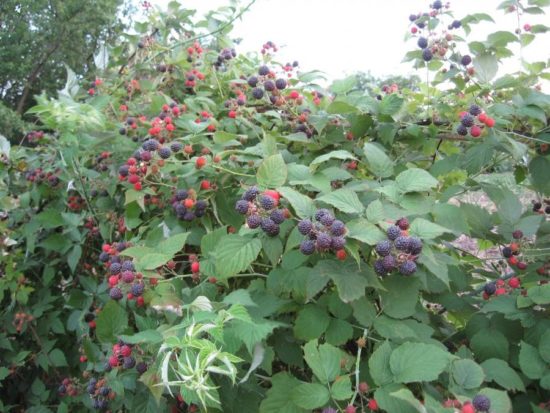
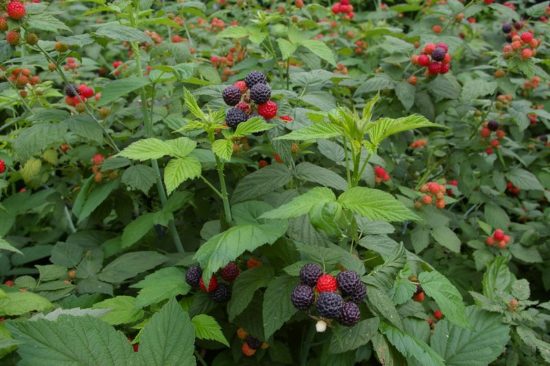
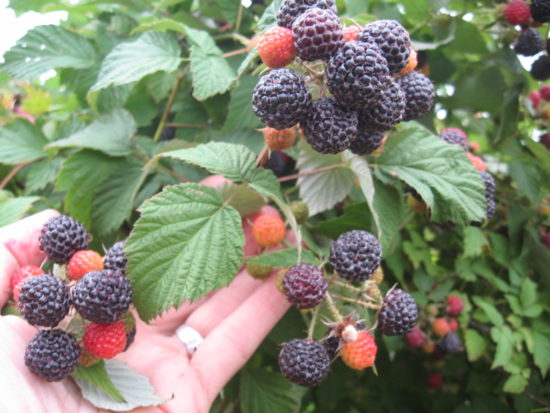
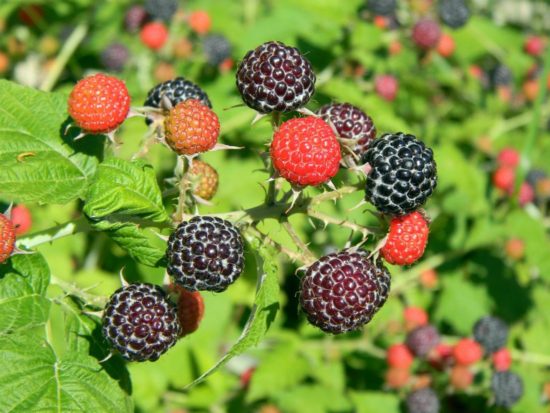

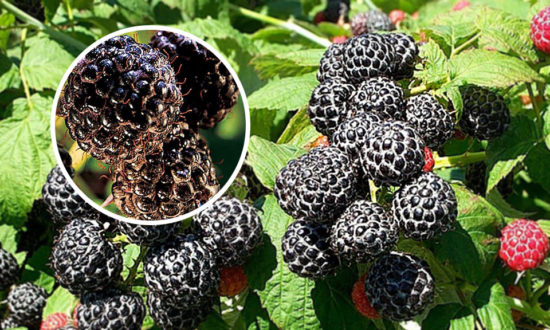
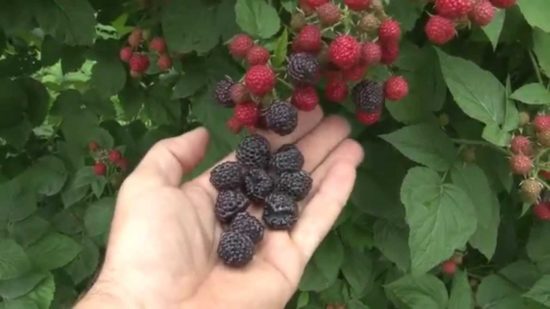
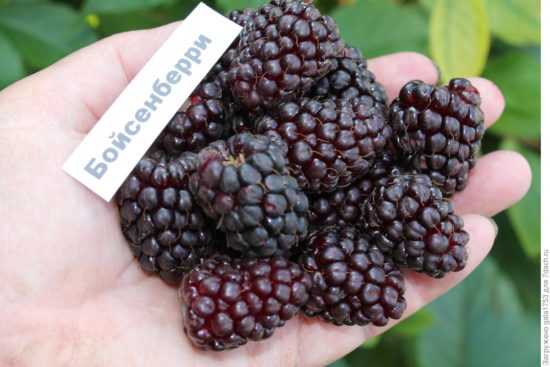
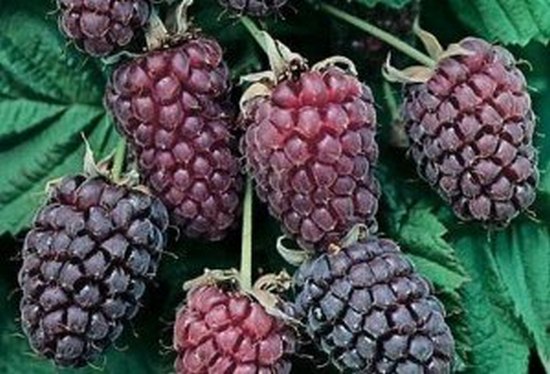
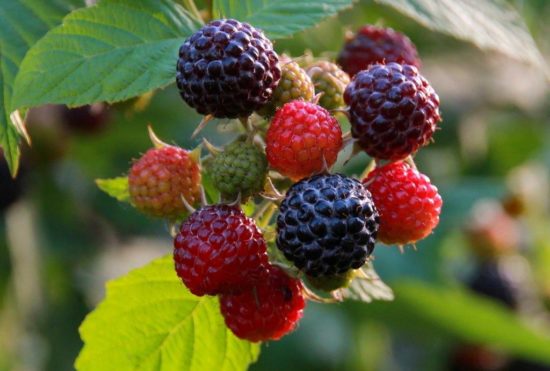
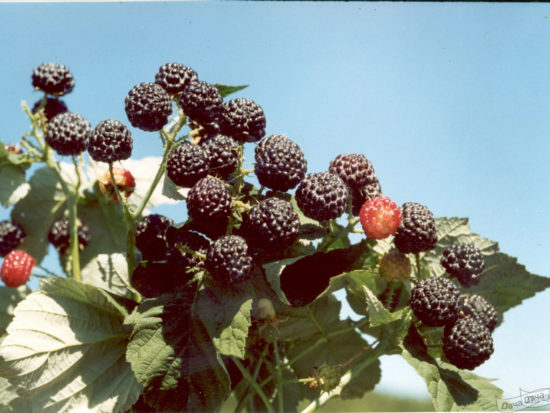
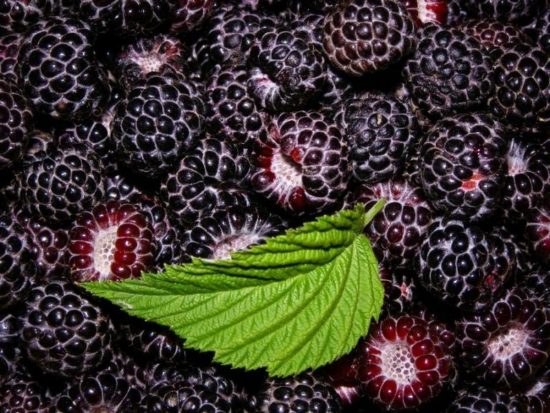
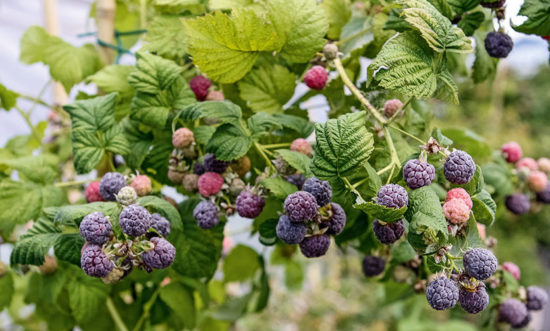
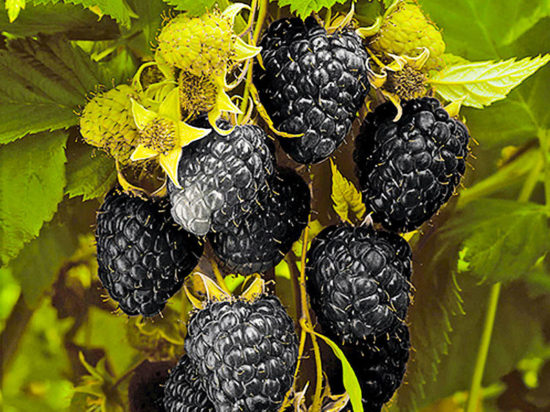
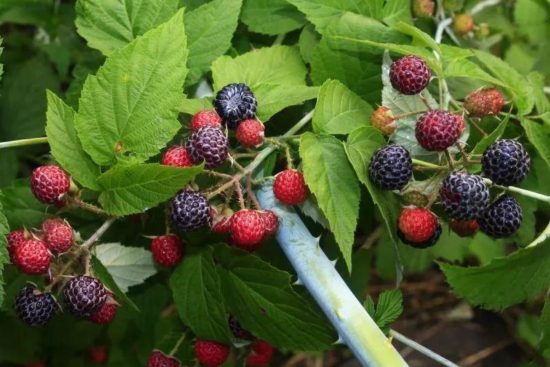
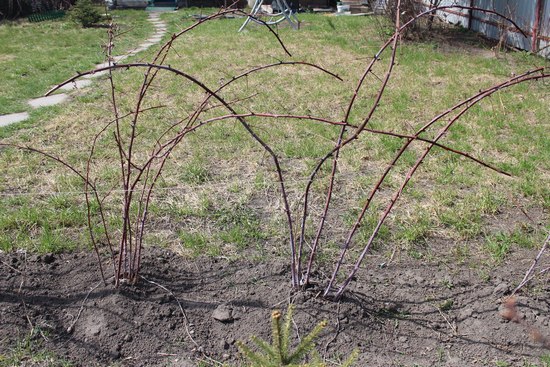

 CUCUMBERS NEVER GET SICK, I'VE BEEN USING ONLY THIS FOR 40 YEARS! I SHARE A SECRET WITH YOU, CUCUMBERS ARE LIKE THE PICTURE!
CUCUMBERS NEVER GET SICK, I'VE BEEN USING ONLY THIS FOR 40 YEARS! I SHARE A SECRET WITH YOU, CUCUMBERS ARE LIKE THE PICTURE! You can dig a bucket of potatoes from each bush. Do you think these are fairy tales? Watch the video
You can dig a bucket of potatoes from each bush. Do you think these are fairy tales? Watch the video
 How our fellow gardeners work in Korea. There is a lot to learn and just fun to watch.
How our fellow gardeners work in Korea. There is a lot to learn and just fun to watch. Eye trainer. The author claims that with daily viewing, vision is restored. They don't charge money for views.
Eye trainer. The author claims that with daily viewing, vision is restored. They don't charge money for views. A 3-ingredient cake recipe in 30 minutes is better than Napoleon. Simple and very tasty.
A 3-ingredient cake recipe in 30 minutes is better than Napoleon. Simple and very tasty. Therapeutic exercises for cervical osteochondrosis. A complete set of exercises.
Therapeutic exercises for cervical osteochondrosis. A complete set of exercises. Which indoor plants match your zodiac sign?
Which indoor plants match your zodiac sign? What about them? Excursion to German dachas.
What about them? Excursion to German dachas.